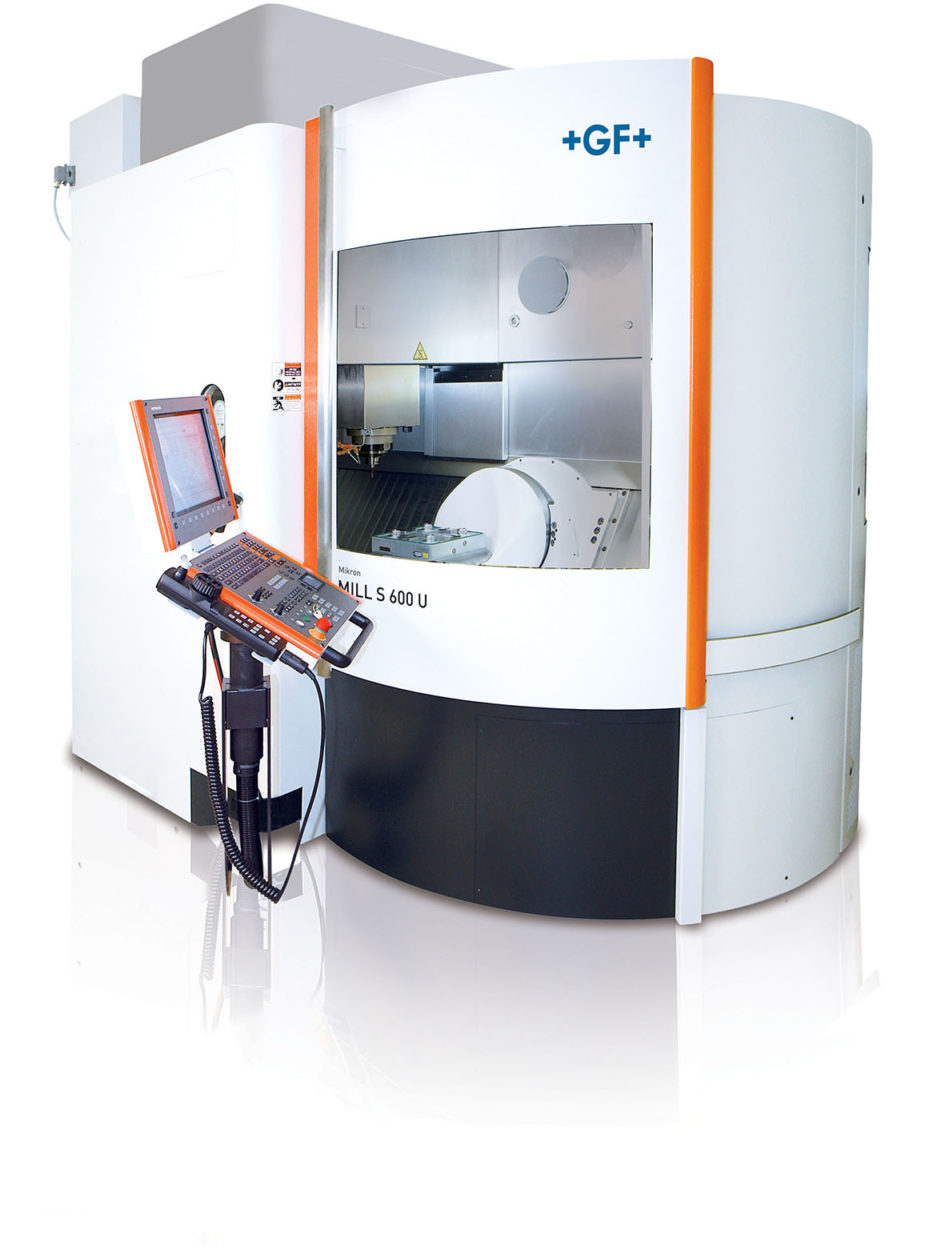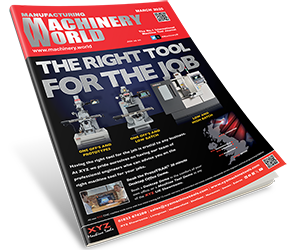Increased process stability, quality, and productivity are just some of the advantages precision mould and die makers can expect from GF Machining Solutions’ Mikron MILL S 600 U 5-axis machining centres, now equipped with new high-precision HVC140 (StepTec) spindles.
The new Mikron MILL S 600 U machining centre is designed for mould and die makers looking to achieve high accuracies and to maintain unrivalled process reliability during lengthy and prolonged machining runs (i.e. when machining high-precision multi-cavity moulds).
The machining centres, with their rigid base construction combine high dynamic direct-drive technology with a range of design and build features and integrated on-board software that ensure thermal stability and, as a consequence, guaranteed high precision and process optimisation. These SMART software modules include:
– Ambient Robust which monitors and regulates thermal variation detected in the machine’s base and drives;
– OSS (Intelligent Operator Support System) which helps customers optimise their machining processes based on workpiece specifications/dimensions and their specific machining priorities – speed, accuracy and surface finish;
– ITC/ITC 5AX (intelligent Thermal Control) which eliminates the need for, OR reduces the time required for, warm-up cycles.
In addition, the Mikron machines are equipped with StepTec’s HVC140 spindles which deliver high power and speed (13.5kW/42,000rpm), and feature proven OptiCool technology.
StepTec Spindles
The StepTec Opticool spindle system, with its enhanced polar thermal balance, controls the temperature of the machine’s spindle and spindle bearings to improve part accuracies and surface finishes.
This spindle system, working in conjunction with the machines’ Smart Technology software (mentioned above), helps reduce spindle warm-up cycle times and ensures high accuracy and process reliability.
Also contributing to the spindle’s performance is an all new bearing design using ultra-high precision ceramic hybrid bearings. As a result of their incorporation, radial and lateral stiffness are increased by 16 percent and 60 percent respectively – and low radial and axial run-out, as well as repeatability, at the tool interface of less than two microns are achieved.







